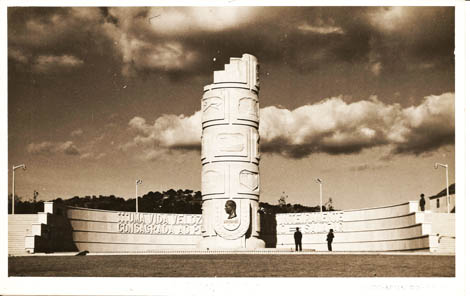 On 16 November 1953, precisely 60 years ago, António de Oliveira Salazar was visiting Loulé, on what would be his third and last visit to the Algarve, during his government.
On 16 November 1953, precisely 60 years ago, António de Oliveira Salazar was visiting Loulé, on what would be his third and last visit to the Algarve, during his government.
The objective was concrete and concise: the consecration of the memory of Eng. Duarte Pacheco, perpetuated in a monument.
Born in Loulé, Duarte José Pacheco (1900-1943) was one of the most outstanding ministers who were part of Oliveira Salazar's governments.
Electrical engineer by training, he has held several public positions, including director of the Instituto Superior Técnico, president of the Lisbon City Council, minister of Education and also of Public Works and Communications.
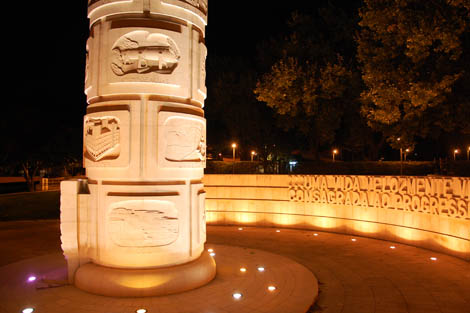
Despite having dedicated himself to the public cause for only two decades, his brand was strong and perennial in the provision of various infrastructures that are fundamental to the country's development. Works that were bold for the time and conceived as a vast project horizon, in such a way that most of them continue to serve the country today (a mere example being the Hospital de Santa Maria, in Lisbon).
Victim of a road accident at the age of 43, while on his way to a Council of Ministers, Duarte Pacheco died unexpectedly on November 16, 1943.
From then on, Loulé City Council developed a titanic struggle for the erection of a monument dedicated to the deceased minister, in his native land. Despite numerous setbacks and many adversities, the municipality even surpassed its Lisbon counterpart (which meanwhile also intended to carry out the glorification of the former minister), conquering in 1952 the desired monument.
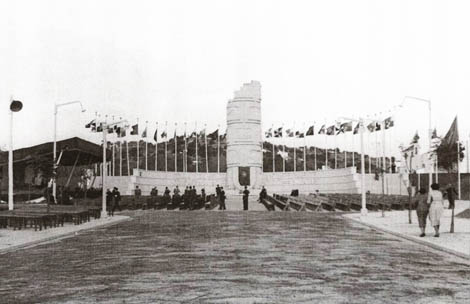 The persistence and parochialism of Loulés prevailed and, ten years after the death of the prodigal son, Loulé received the highest figures in the nation (with the exception of the President of the Republic) and, in the presence of the Head of Government, inaugurated the monument to Duarte Pacheco.
The persistence and parochialism of Loulés prevailed and, ten years after the death of the prodigal son, Loulé received the highest figures in the nation (with the exception of the President of the Republic) and, in the presence of the Head of Government, inaugurated the monument to Duarte Pacheco.
Located at the top of an avenue, somewhat completed for the purpose, it was designed by the architect Cristino da Silva, who designed a monumental work, financed by public subscription from all the country's municipalities.
It is the main monument of the Estado Novo erected in the Algarve and one of the most accomplished and coherent monuments that were bequeathed at the national level in that period.
Roughly speaking, it consists of a column, 17 meters high, truncated at the top (symbolizing the tragic interruption in the work of the honored person).
 In turn, on the plinth, placed near the base of the shaft, a bas-relief in bronze, by Leopoldo de Almeida, represents the effigy of the former minister.
In turn, on the plinth, placed near the base of the shaft, a bas-relief in bronze, by Leopoldo de Almeida, represents the effigy of the former minister.
The monument is also composed of 18 panels in low relief, designed by several sculptors, which symbolize the work of Duarte Pacheco and the regime itself, being perfectly framed and complemented by the space it occupies.
The days before the opening ceremony were spent in Loulé with a lot of hustle. However, on the morning of that Monday, November 16, 1953, everything was carefully prepared, as shown by the minutes of the Chamber drawn up the day after the ceremony.
So, by 8:XNUMX am, “the presence of many people was already evident, either from the surroundings or from outside the land. The traffic started to increase with cars coming from various regions of the province and there were also many cars from far away with taxi marks from other cities”.
The first ceremony of the day was held in the parish church of São Clemente, at 9:30 am, where the solemn funeral was held, presided over by the coadjutor bishop of the Algarve, Frei Francisco Rendeiro.
In the center of the nave of the temple, which was “adorned with black draperies”, a funeral urn (cenotaph) was set up, flanked by twelve candles.
In addition to family members (the two sisters, the two brothers and the nephews), different authorities from the region and the country were present at the ceremony.
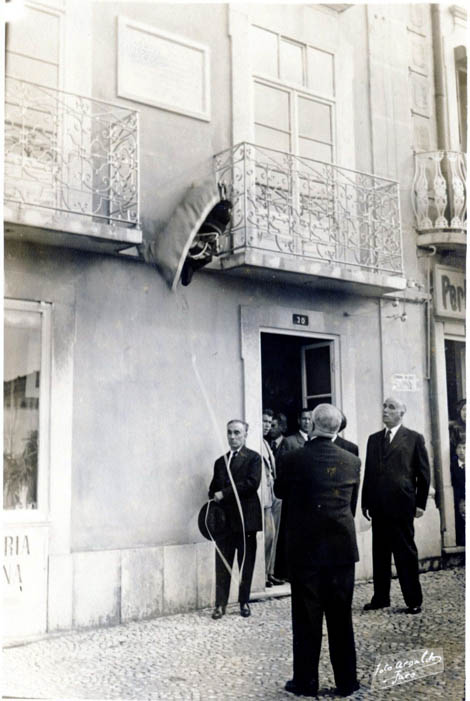 A procession was then organized and headed to the building where Duarte Pacheco was born, in Praça da República, where a tombstone commemorating that birth was unveiled, followed by several speeches.
A procession was then organized and headed to the building where Duarte Pacheco was born, in Praça da República, where a tombstone commemorating that birth was unveiled, followed by several speeches.
By early afternoon, Loulé was swarming with people. The newspaper Loulé's Voice estimated that about 20 thousand people traveled to the locality to attend the inauguration of the monument. This and the surrounding area presented, according to the minutes of that municipality, the following scenario:
“Next to the monument and in front of the Presidential Tribune, an imposing audience was built for twelve hundred guests. Behind the monument, on elegant poles, the flags of various municipalities in the country were unfurled. Below the monument, the standard bearers of the municipalities of the Algarve were placed. Along the sidewalks of Avenida General Carmona, deputies of the Municipal Councils, on the first plate south of the Health Centre, of the Parish Councils, on the second plate and of recreational and sports associations, unions, Guilds, Casas do Povo on the third plate. The look of the whole was great. Many guilds displayed their standards, other plaques with the indication of the entity represented, other badges of greeting. The deputation of the Vila schools, made up of third and fourth grade students, formed on the sidewalk in front of the Tribuna, where the two local philharmonics were also stationed: União Marçal Pacheco and Artistas de Minerva”, wrote the newspaper Loulé's Voice.
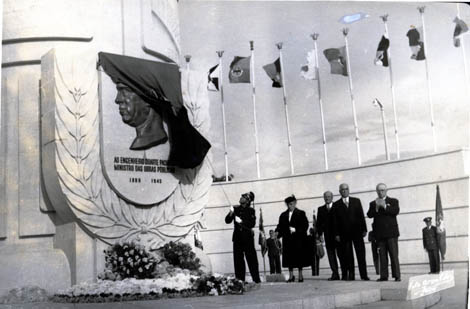 At around two in the afternoon, the passengers of a special train that had left Lisbon at eight in the morning arrived in Loulé to attend the ceremony.
At around two in the afternoon, the passengers of a special train that had left Lisbon at eight in the morning arrived in Loulé to attend the ceremony.
At the same time, the car driving the President of the Council, accompanied by the Minister of Public Works (José Frederico Ulrich), reached S. Romão, the limit of the municipalities of Loulé and São Brás de Alportel, where it was awaited by the mayor of Loulé , among other entities.
The head of government had traveled the night before to the Algarve, staying in Cacela, on Quinta de Cima, property of the then deputy and former minister, Sebastião Garcia Ramirez.
The following morning, according to Salazar's personal schedule, he participated in a ceremony at the cinema in Vila Real de Santo António, then headed to pay homage to Duarte Pacheco.
The entourage entered Loulé and walked along Avenida José da Costa Mealha, “under a shower of petals that threw it from the windows and which was all decorated with hangings, as well as the rest of the village”.
The chairman of the Board went down to Largo Gago Coutinho, "where the immense mass of people, compressed, won and acclaimed with much applause and cheers."
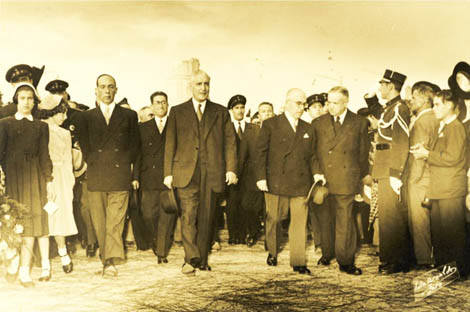 Here, he was expected by the ministers of the Presidency and Communications (Costa Leite), undersecretary of Public Works, among other individuals.
Here, he was expected by the ministers of the Presidency and Communications (Costa Leite), undersecretary of Public Works, among other individuals.
“From this place to the gallery, His Excellency was the target of the greatest proofs of adoration, friendship and affection, along the path taken on foot beside the Mayor”.
After the official entities took their place in the gallery, decorated with plants and national colours, the mayors of Lisbon and Loulé City Councils and the brothers of Duarte Pacheco, Humberto and Clotilde went to the monument.
The latter proceeded to unveil the effigy of the deceased brother, while the bands performed the national anthem. This was followed by the reading, by the head of the Loulé City Council secretariat, Raul Rafael Pinto, one of the main mentors and promoters of the construction of the monument, of the inauguration minutes, drawn up in the city's gold book, which was then signed by the members from the table, as well as by all the people who wished to do so.
This was followed by the official speeches given by the mayors of Loulé and Lisbon (framed in the usual typology of praise and exaltation of the current regime, underlined with vibrant applause) and by António de Oliveira Salazar, closing the session.
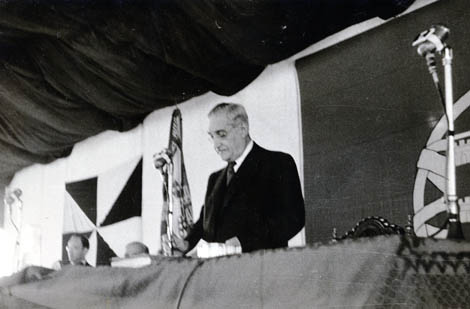 As the President of the Council prepared to give his "master prayer", a squadron of eight jet planes, in two columns, flew over the rostrum twice, "letting all the assistants deeply moved".
As the President of the Council prepared to give his "master prayer", a squadron of eight jet planes, in two columns, flew over the rostrum twice, "letting all the assistants deeply moved".
The Head of Government began his speech (later published in a booklet À Memória de Duarte Pacheco), “with a touch of feeling in his voice, (…) a hint of nostalgia in his meditated but warm and exciting words”, in the words of correspondent of the Diário de Notícias, mentioning that Duarte Pacheco had not died, that his spirit was always present: “There are dead people who do not die, and all of us who have come from far or near, on a nostalgic pilgrimage, are the ones who testify that this one does not died".
He then congratulated the municipalities, the Minister of Public Works and all the artists for their commitment to building the monument. Constantly reaffirming that that was not the place or the proper time to give a statement about Duarte Pacheco, "as I promised ten years ago in the National Assembly, "before the Nation that lost him and the History that proudly gathered him in its bosom"".
However, he agreed to pronounce a few very light notes about the person being honored, praising him “for the mass of material achievements, and also, and above all, for the school he formed”. Also qualifying his material work as an immense work, and explaining the solution used by the minister to achieve such results: “The selection and preparation of numerous personnel, the coordination of efforts against the dispersion of men and resources, serious study in opposition to improvisation, the prior definition of principles, the demand for plans, the optimism of action, the climate of the heights and of the broad horizons”.
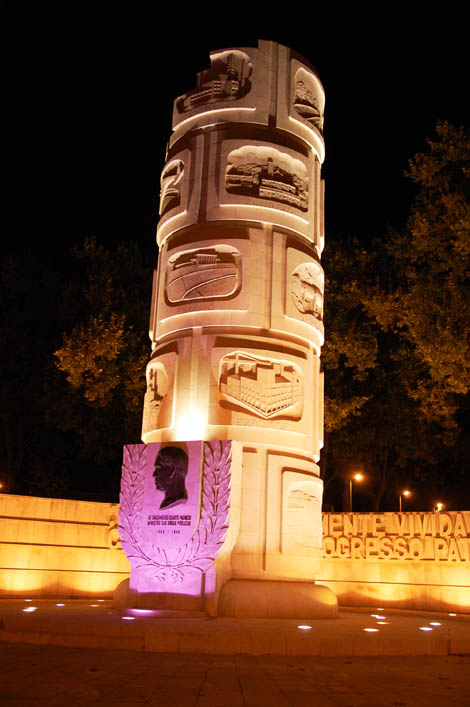 Salazar concluded with a praise to the population of Loulé, alluding to the fact that “Portugal is here in a communion of spirit with us, celebrating, although amidst the mists of nostalgia, the glory of a Portuguese, this Portuguese is one of yours, it is the greatest and most illustrious son of your land”.
Salazar concluded with a praise to the population of Loulé, alluding to the fact that “Portugal is here in a communion of spirit with us, celebrating, although amidst the mists of nostalgia, the glory of a Portuguese, this Portuguese is one of yours, it is the greatest and most illustrious son of your land”.
After his oratory, the President of the Council toured the monument, listening to explanations from the architect Cristino da Silva, who introduced it to the sculptors who wrote the bas-reliefs.
The Chairman of the Board walked down Avenida General Carmona again, today 25 de Abril, “through compact aisles again, which unceasingly acclaimed him enthusiastically,” according to Diário da Manhã.
At the time of departure and on behalf of the women of the village, a group of women offered the head of Government an elegant beaten copper vase from the local workshop of Mestre José Barracha, who also, as a souvenir, gifted Prof. Salazar with another artistic covers of its manufacture. The members of the Government then left Loulé amidst applause and "cheers".
Thus ended in a grandiose way, like most celebrations of the Estado Novo, the journey of national consecration to the memory of the illustrious Loulé. Loulé Council had made the dream come true in a resounding success.
As an epilogue, note the description of the Diário de Notícias: “Everything that could be conceived of the best to honor and remind generations of the exalted figure of Duarte Pacheco has just taken place in this luminous land of the Algarve that certainly lived the greatest day of your story. Although the "rare man" that Salazar had the fortune of finding for the realization of his national reconstruction plan already belongs to posterity and the entire Nation is proud of him and claims him, the Government and municipalities throughout the country did not hesitate to support the his ardent initiative the Câmara Operasa that saw him born, to erect there, as an expression of national recognition, the monument that remains from today onwards in his loving care”.
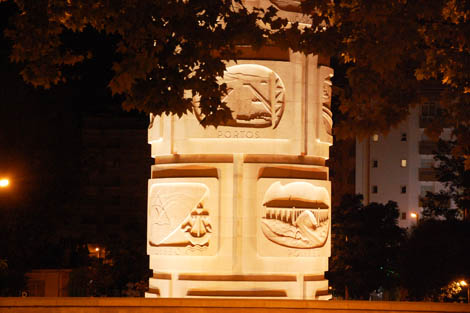 António de Oliveira Salazar returned to Lisbon that same day, with a brief stop at the Pousada de S. Brás de Alportel, where he had tea.
António de Oliveira Salazar returned to Lisbon that same day, with a brief stop at the Pousada de S. Brás de Alportel, where he had tea.
Sixty years later, the Loulé municipality did not forget the ephemeris, with the Municipal Archive dedicated the 8th edition of the publication “Caderno do Arquivo” to the event “The National Consecration of Duarte Pacheco – The Construction of the Monument of Loulé”, by Jorge Filipe Palm. Work that we consulted and to which we refer the reader interested in more details.

Author Aurélio Nuno Cabrita is an environmental engineer and researcher of local and regional history


















Comments